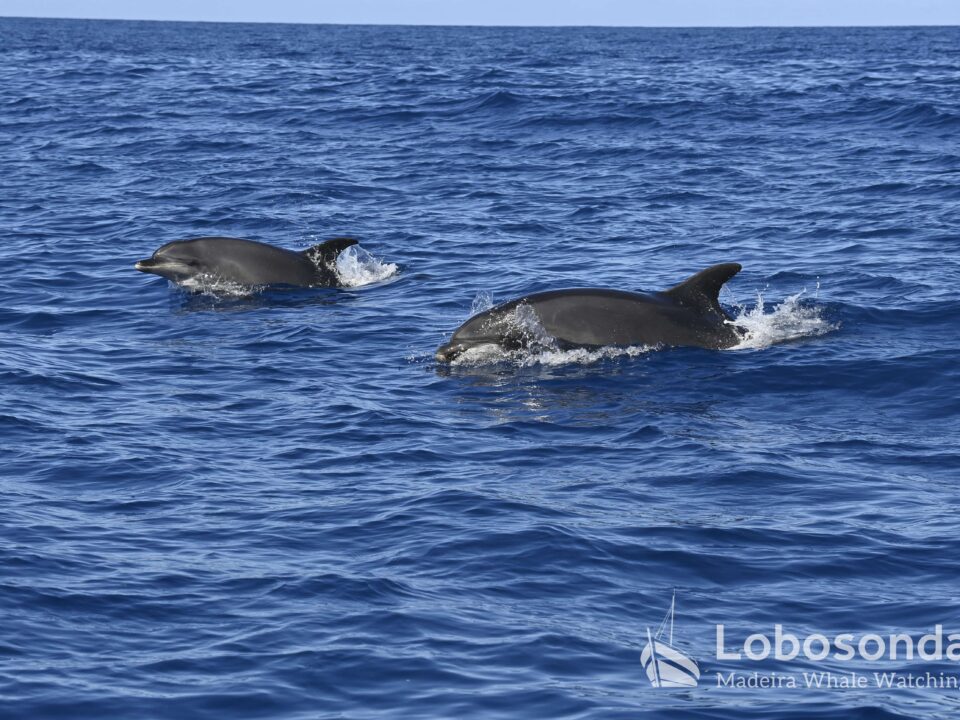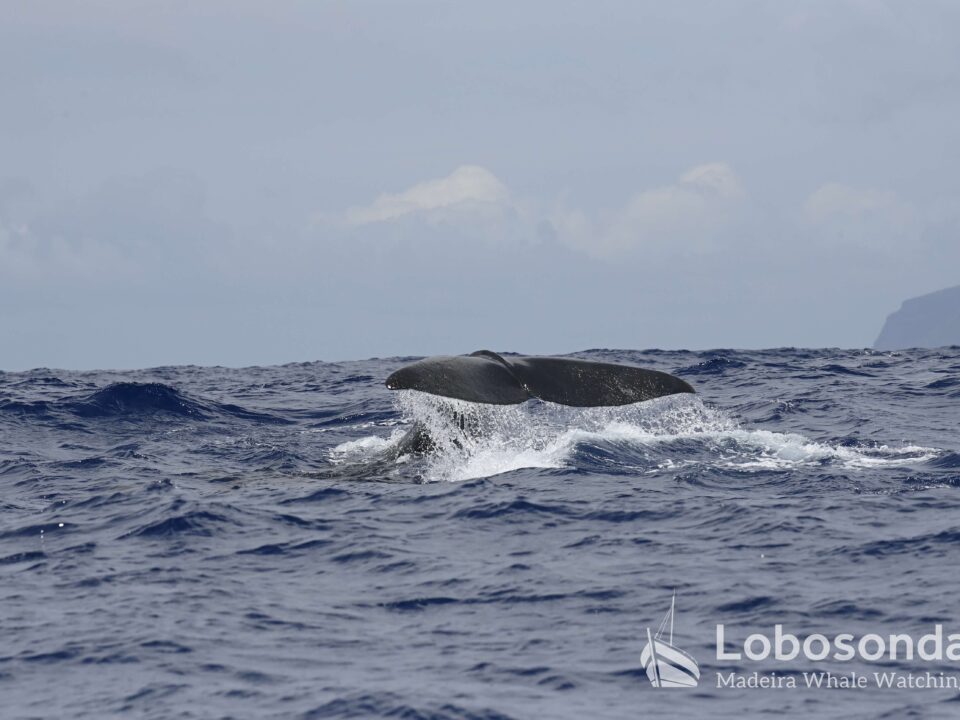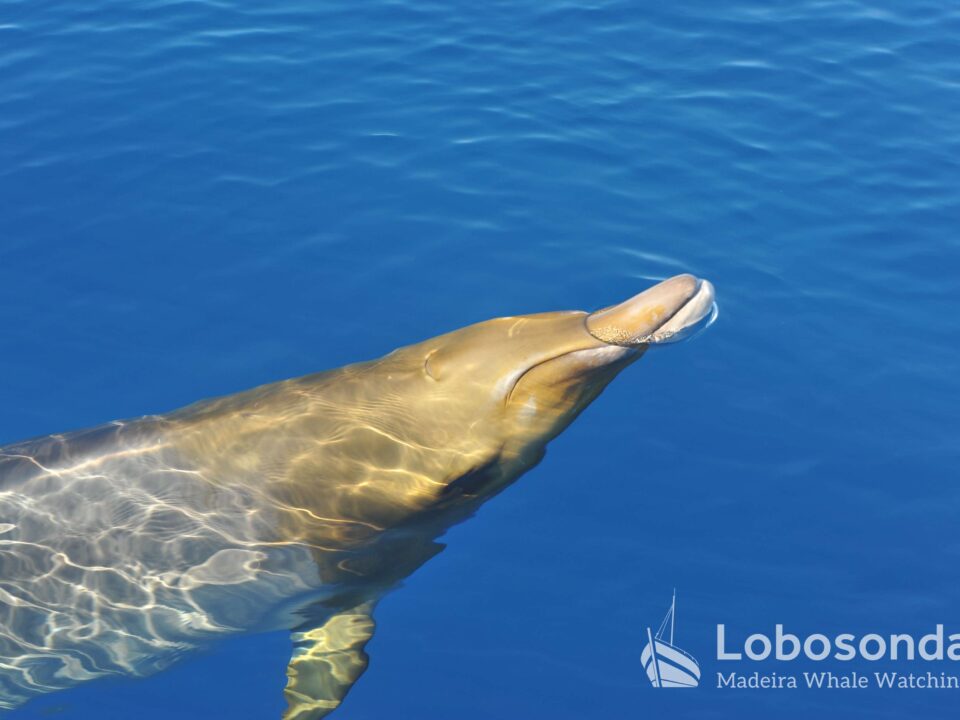
09.01.2024 – An easy morning with Whales and Dolphins in Madeira
January 16, 2024
BWB – Beyond Madeira’s Waters, where do they go next?
January 20, 2024We had a few wonderful cetacean visitors making our tour a memorable one this morning. We had the pleasure of enjoying a peaceful gathering of a family of Short-finned pilot whales (Globicephala macrorhynchus) enjoying each others company in the waters outside of Tabua. Photo-ID technology has allowed local researchers to put together catalogues containing each individuals dorsal fin, its distinguishable feature, and map the population’s habitat. It turns out that Madeira shares its pilot whale families with the Canary Islands, with pods moving between the islands and through their territorial waters. Their strong relationship to both island systems also makes them one of the most important marine predators in this large marine habitat.
Another oceanic cetacean that represents an important predator not just for Madeira, but for its sister archipelago, the Azores, is the mighty Sperm whale (Physeter macrocephalus). Sperm whales are known as deep sea hunters, controlling prey populations in the abyss and circulating an abundance of nutrients through their dive movement. After years of exploitation during the whaling period, these gentle giants are now finally seeing their number gradually recover. In Madeira they can be encountered all year round, with their occurrence peaking during the autumn months. Scientists are still trying to figure out how the populations move around the macaronesian archipelagos but every single sighting, including this mornings, is a beautiful demonstration of how Madeira could potentially be an important habitat for them.
By Paula Thake
Sightings of the day
Stenella
09:30 Short-finned pilot whales, Sperm whales















